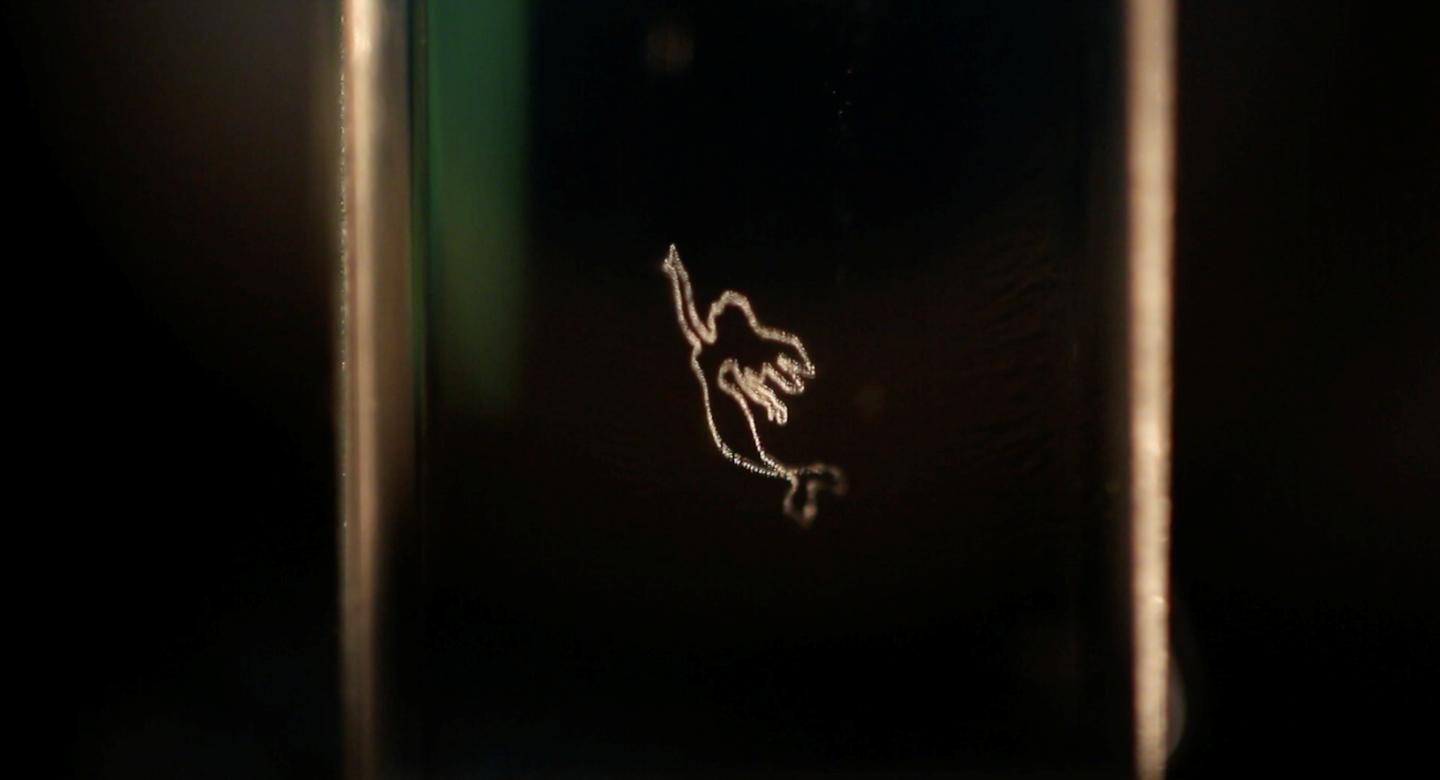A new type of display creates 3-D images by using a laser to form tiny bubbles inside liquid. The columnar display itself is three-dimensional, or volumetric, permitting viewing from any angle without special glasses or headsets.
Researchers led by Yoshio Hayasaki of Utsunomiya University, Japan, describe the technique in a paper published in Optica, The Optical Society journal.
How It Works
 A laser-generated 3-D mermaid suspended in a glass column filled with liquid could represent the next generation of display technology.The bubbles for the new display are created through multiphoton absorption: Multiple photons from a femtosecond laser are absorbed at the point where the light is focused. The researchers created microbubbles at very precise locations by moving the focus of the laser light to various parts of a liquid-filled cuvette. The high-viscosity liquid prevented the bubbles from immediately rising to the top of the liquid.
A laser-generated 3-D mermaid suspended in a glass column filled with liquid could represent the next generation of display technology.The bubbles for the new display are created through multiphoton absorption: Multiple photons from a femtosecond laser are absorbed at the point where the light is focused. The researchers created microbubbles at very precise locations by moving the focus of the laser light to various parts of a liquid-filled cuvette. The high-viscosity liquid prevented the bubbles from immediately rising to the top of the liquid.
"Creating a full-color updatable volumetric display is challenging because many three-dimensional pixels, or voxels, with different colors have to be formed to make volumetric graphics," said Kota Kumagai, first author of the paper.
Rather than creating each bubble one by one, the researchers used a computer-generated hologram to form 3-D patterns of laser light that let them control the number and shapes of the microbubble voxels. This approach also increased the amount of light scattered from the microbubbles, making the images brighter.
Practical Applications for Volumetric 3-D Display
The 3-D displays could also have healthcare applications: Doctors could view a patient’s internal anatomy in three dimensions, from any angle, prior to surgery or for diagnoses that currently use 2-D imaging technology.
Additionally, by using drones to capture images of terrain and then rendering those images in volumetric 3-D, the military could plan missions with more in-depth, real-world knowledge of what to expect

